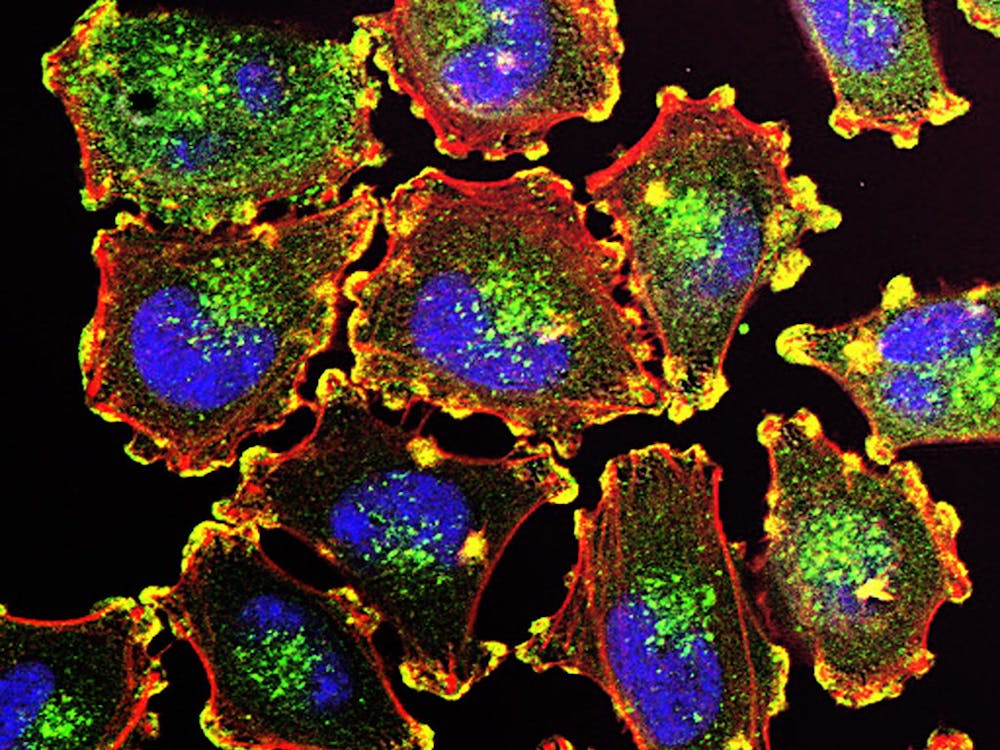While binging on Twinkies, picking up daddies at the playground and drinking up all your money may not constitute constructive life decisions, Tove Lo might be on to something in her 2014 single “Stay High,” in which she documents her experiences of, well, getting high.
Although remaining under the influence of marijuana for extended periods of time is poor medical advice for anyone, new research shows that in states where medical marijuana use for chronic pain management is legal, the annual number of deaths from prescription drug overdose is 25 percent lower than in states where medical marijuana use is still illegal.
The study, published in the Aug. 25 issue of JAMA Internal Medicine, suggests that despite the controversy over medical marijuana laws, the drug may have unexpected benefits as well. The findings of the study suggest that the wider availability of medical marijuana for people suffering from chronic or severe pain might help to decrease the rising number of deaths attributed to prescription painkiller overdose.
Researchers from the Bloomberg School of Public Health and the Philadelphia Veterans Affairs Medical Center conducted the study. Marcus Bachhuber, the lead author and a researcher at the Philadelphia Veterans Affairs Medical Center, relates the study directly to his clinical work.
“I’m a primary care doctor, and so in my practice, I take care of a lot of people with chronic pain,” Bachhuber wrote in an email to The News-Letter. “Sometimes people would say that marijuana was the only thing that worked for their pain, or I’ve even seen people who would tell me that they had tried prescription painkillers — like Vicodin, Percocet or OxyContin — but the only thing that worked for them was marijuana.”
From these clinical observations, Bachhuber and other researchers began developing the study.
“One day I was talking about this with my colleagues and we wondered how this might play out in states where medical marijuana was legal,” Bachhuber wrote. “We thought maybe, if people chose marijuana over prescription painkillers on a large scale, medical marijuana states might see lower rates of painkiller overdoses — and even overdose deaths. So we decided to study it.”
Some states have adopted medical marijuana laws to grant access to the drug to people with chronic or severe pain, often due to conditions such as multiple sclerosis or cancer. Additionally, cannabis is believed to have painkilling, nausea-relieving and appetite-improving properties.
To carry out the study, the researchers analyzed death certificate data compiled by the Centers for Disease Control & Prevention.
“We looked at prescription painkilleroverdose deaths from 1999 to 2010 in states that had medical marijuana laws and states that didn’t,” Bachhuber wrote. “We found there was about a 25 percent lower rate of prescription painkiller overdose deaths, on average, after implementation of a medical marijuana law. This is a 25 percent lower rate, on average, compared to years before the law and trends in the rest of the country.”
Prior to 1999, only California, Oregon and Washington had legalized medical marijuana. Ten more states followed between 1999 and 2010, the time period covered by the study analysis. To date, 23 states in total and Washington D.C. have passed similar laws.
The study opens up several routes for future investigation.
“This study isn’t a controlled experiment, and so there are several potential explanations of our results,” Bachhuber wrote. “Going into the study, we believed that medical marijuana laws might change the behavior of people with chronic pain – they might choose marijuana over prescription painkillers. That is one possibility, but another possibility is that medical marijuana laws might change behavior of people who misuse, abuse or are addicted to prescription painkillers. Or even something totally different.”
As well, the study unlocks much potential for future research. “We looked at big picture trends at the state level, so we can’t pinpoint exactly why we saw what we did,” Bachhuber wrote. “Now it will be important to figure that out. What we need are studies following individuals over time to determine if and how medical marijuana laws change the way they use prescription painkillers.”
The study’s findings may also call for re-evaluation of current medical marijuana laws and their effects on patients.
“I think the unique contribution of our study is that it provides evidence of a possible unexpected public health benefit of medical marijuana laws and policy,” Bachhuber wrote. “Beyond providing access to medical marijuana for individuals, these laws may have broader impacts on public health, which we should study.”
However, even though this study demonstrates the potential health benefits of medical marijuana, especially for individuals with chronic or severe pain, obstacles still must be overcome before medical marijuana can be legalized and decriminalized on a national level.
“Many states that have legalized medical marijuana have done so through ballot measures or referendum — through a popular vote,” Bachhuber wrote. “Studies that I’ve seen have shown the vast majority of the American public to be in support of medical marijuana legalization. Right now, marijuana is classified as a Schedule I drug federally, meaning that the federal government believes it to have no legitimate medical use and a high potential for abuse. This is a major barrier to medical marijuana research, and I think many medical providers struggle in figuring out what conditions medical marijuana could be used for, who would benefit from it, how effective it is and who might have side effects. Going forward, more research to guide us in clinical practice is crucial.”
So the next time Tove Lo can’t go home alone again and needs someone to numb the pain, she may consider using medical marijuana to alleviate her discomfort — given that she resides in a state that has legalized medical marijuana and that she has a pre-approved condition to qualify for a medical marijuana prescription.






















Please note All comments are eligible for publication in The News-Letter.